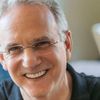I'm glad to announce today The Harwood Institute's plan to train 5,000 new Public Innovators by 2016. Public innovators are individuals with the mindset and skills to catalyze and drive productive change in communities and change how communities work together. We'll also grow our Public Innovators Corps to 100,000 members -- individuals who actively support this new direction and use our approach to better their communities, organizations and lives.
We've put this stake in the ground to counter the growing toxic public discourse, division and mistrust in our society. There is an urgent need to make community a common enterprise. Even the best leaders, organizations, and citizens cannot make progress alone in the existing environment. We must pull together in a common direction.
This year I'll also continue our new Reclaiming Main Street Campaign in which I'll be touring the country to lay out what people and groups can do to make communities a common enterprise, and to invite individuals from all walks of life to join this cause. To be clear, this is not an initiative to garner support for the Institute, but rather for the Institute to support the progress I have heard so many Americans say they want to achieve in their communities.
Public innovators -- a designation developed by the Institute -- share three defining characteristics. First, they have deeply held ideals that serve as a compass for everything they do in their work and community. Second, they are deeply pragmatic; they know that ideals alone will not produce the change they seek. They want to know what works and they are insistent on re-calibrating their efforts as they learn. Third, they understand risk. They are willing to push hard for change and try out new ideas, while recognizing they must align their efforts to what people care about in their communities.
At the Institute, we don't "create" public innovators. Instead, we help people tap into their own innate potential and capabilities to develop themselves into public innovators. We teach these individuals a practice that involves a mindset of making the community the reference point for everything they do (what we call being "turned outward") and a set of core competencies that gives them the skills to bring people together to produce results on issues ranging from education and hunger to health care and financial literacy.
Admittedly, our 2016 goals are audacious. But we stand at a critical point in time. The Institute's efforts -- together with like-minded endeavors across the U.S. -- can make a real difference in restoring our belief that we can get things done together. Through these efforts we aim to create:
1.Proof points of change -- generating both big and small wins that demonstrate that change is possible;
2.New ways of working -- showing that it is possible to fix our toxic public discourse, increase shared responsibility and make community a common enterprise. These are essential to answer people's yearning for an alternate path to business as usual;
3.An army of storytellers -- mobilizing people and groups to amplify and spread stories of change. It is imperative to foster a new, can-do narrative that combats ingrained negative beliefs that progress is not possible;
4.A path for people to act -- providing individuals and groups clear ways to get started and take action in their communities and lives. People want to step forward, but they need to see how they can make a difference.
I said earlier that no one group or individual can do this work alone. I believe that. And so one of the ways in which the Institute is achieving these goals is through forging alliances with networked organizations such as United Way Worldwide, American Library Association, AARP and public broadcasting. Literally thousands of local affiliates and individuals in these networks are now using our practice across the U.S. and around the globe.
And we're starting new alliances all the time. Just last week we launched a new statewide partnership with the Indiana Association of United Ways to develop public innovators throughout the 60-plus local United Ways in the state. We'll be announcing additional alliances in the coming months. At this very moment, the Institute is building a critical mass of public innovators and organizations in individual communities such as Battle Creek, Mich. and Youngstown, Ohio to help shift the civic culture of those communities.
Throughout the country, public innovators are finding one another and working together. Our new strategy is to greatly expand these efforts in order to marshal the collective energy of individuals and groups to move the country in a new direction.
I hope you'll join with me in this effort as we:
•Bring Public Innovator Labs to more communities in the coming months. Join us for one of these Labs, or even bring a Lab to your community.
•Develop and launch a new Public Innovator Certification program over the next 18 months. You'll be able to go deeper in this approach and get certified.
•Recruit 100,000 members of the Public Innovators Corps by 2016.We'll provide them with ways to take effective action in their communities, organizations and lives. My hope is that you will encourage your friends and colleagues to join with us.
•Expand the Reclaiming Main Street Campaign. We'd love to come to your community.
I invite you to write me directly at rharwood@theharwoodinstitute.org about how, together, we can make communities a common enterprise and put our nation on a more productive, hopeful path.
